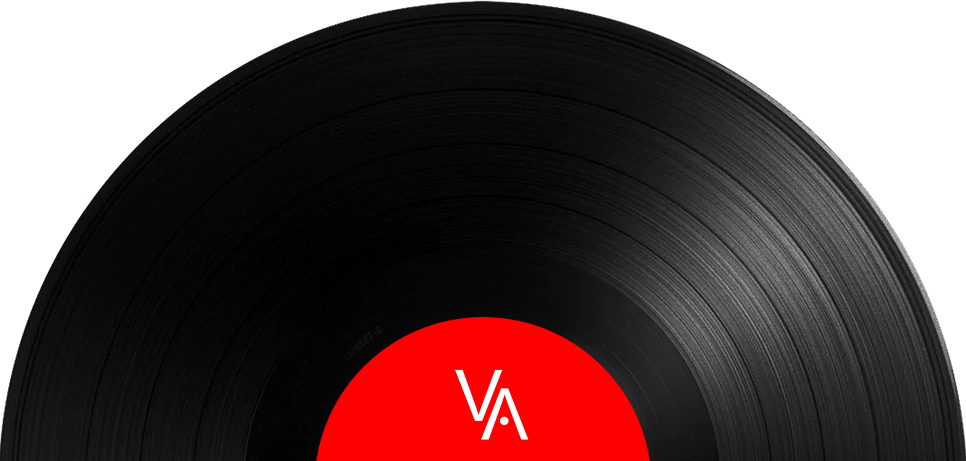
"I think we were pretty high when we made a lot of that record," Geddy Lee said of Caress of Steel in the documentary, Beyond The Lighted Stage.
It was Rush's third LP and it combined the hard-rock of their first two albums with, well - pot. It was their first attempt at prog-rock, but it's also the record that caused a lot of people to shake their heads and say, "Hello? What the fuck!?"
"That whole Caress of Steel period is stuck in a strange and funny moment in our history," Lee told Rolling Stone magazine, in 2014. The band entered Toronto Sound Studios in June, 1975, with the intention of expanding their musical direction in a more progressive manner. "We've been influenced by everyone who's good," Lee told the St. Catharines Standard that year. "We're constantly being compared to Led Zeppelin, but that's only because my voice sounds like Robert Plant's - it's an unfortunate coincidence."
Working closely with producer Terry Brown, the band got to work smoking dope and eventually emerged with something that was completely different than anything they'd previously recorded. Fantasy storytelling, psychedelia, some heavy riffing, overdubs - it was a glorious and eclectic mess. Side one starts out with a song about the French Revolution (Bastille Day) and ends with The Necromancer - quite literally defined as someone who can communicate with the dead - that references Tolkien, Satan and the members of the band themselves (three men from Willowdale).
Bastille Day is followed by I Think I'm Going Bald, which I am pretty sure must have been recorded when they were a few dozen joints in. After that clunker there's Lakeside Park, which received some airplay upon the record's release and is a pretty decent song, despite Lee's admission that he thinks it's a lousy song and that he cringes every time he hears it on the radio.
The Necromancer follows, and you're just not expecting anything like it. But it's good - it does grow on you over time - and it has a lot of really cool musical ideas bubbling up and twisting and turning throughout. You'll hear something new the first few times you play it.
Side two is swallowed whole by The Fountain Of Lamneth, the second part of which is called Didacts and Narpets, which you have to listen to stoned the first time you hear it. Promise me you will!
"We played the record for Paul Stanley one night while on tour with Kiss and you could see that he just didn't get it," Lifeson recalled in Beyond the Lighted Stage. "A lot of people didn't get it. We wondered if we even got it!"
The band's following had been growing slowly but steadily due to several years of intensive touring following their first two records, but this album almost negated all those hard-won gains. The tour to follow up the album's release was dubbed the "Down the Tubes" tour by the band, who were beginning to wonder if they'd flung a turd into the wind that was going to blow back on them.
"That was a depressing time," Lee told The Guardian in 2011. "You'd pull up at a venue and they weren't even expecting you. It was humiliation after humiliation. Your shoulders start to slump and you wonder why you're playing a rock club in Oklahoma City on a wet Tuesday night. The label and the management wanted us to follow a straight path, but we went hard left. We were convinced we would be dropped and end back home in the bars."
Despite the LP's inconsistencies it really was a necessary step in the direction of their next record - the stunning breakthrough that was 2112.
"The Fountain of Lamneth on Caress of Steel was really our first full concept song, and 2112 was an extension of it," Alex Lifeson told Guitar World in 2008. "That was a tough period for Rush because Caress of Steel didn’t do that well commercially, but we were really happy with it and wanted to develop that style."
Lee concurs. "A lot of the early stuff I'm really proud of," he told Raw magazine in 1993. "Some of it sounds really goofy, but some of it stands up better than I gave it credit for. As weird as my voice sounds when I listen back, I certainly dig some of the arrangements."
I saw Rush on that tour, in 1975, but I can't remember where (other than it was in Hamilton, Ontario). But I do remember the Hamilton Place show a year later on the 2112 tour. It was the winter of 1976 and the only song they played from Caress Of Steel was Bastille Day, which opened the show. They had begun their ascendancy, by then, and it was a great time to see them play. I just knew they were going to be huge and it wouldn't be long before they outgrew the smaller venues I was so used to seeing them in. All in all I saw Rush 21 times and I still remember those early tours as some of their best shows.
"I think we were pretty high when we made a lot of that record," Geddy Lee said of Caress of Steel in the documentary, Beyond The Lighted Stage.
It was Rush's third LP and it combined the hard-rock of their first two albums with, well - pot. It was their first attempt at prog-rock, but it's also the record that caused a lot of people to shake their heads and say, "Hello? What the fuck!?"
"That whole Caress of Steel period is stuck in a strange and funny moment in our history," Lee told Rolling Stone magazine, in 2014. The band entered Toronto Sound Studios in June, 1975, with the intention of expanding their musical direction in a more progressive manner. "We've been influenced by everyone who's good," Lee told the St. Catharines Standard that year. "We're constantly being compared to Led Zeppelin, but that's only because my voice sounds like Robert Plant's - it's an unfortunate coincidence."
Working closely with producer Terry Brown, the band got to work smoking dope and eventually emerged with something that was completely different than anything they'd previously recorded. Fantasy storytelling, psychedelia, some heavy riffing, overdubs - it was a glorious and eclectic mess. Side one starts out with a song about the French Revolution (Bastille Day) and ends with The Necromancer - quite literally defined as someone who can communicate with the dead - that references Tolkien, Satan and the members of the band themselves (three men from Willowdale).
Bastille Day is followed by I Think I'm Going Bald, which I am pretty sure must have been recorded when they were a few dozen joints in. After that clunker there's Lakeside Park, which received some airplay upon the record's release and is a pretty decent song, despite Lee's admission that he thinks it's a lousy song and that he cringes every time he hears it on the radio.
The Necromancer follows, and you're just not expecting anything like it. But it's good - it does grow on you over time - and it has a lot of really cool musical ideas bubbling up and twisting and turning throughout. You'll hear something new the first few times you play it.
Side two is swallowed whole by The Fountain Of Lamneth, the second part of which is called Didacts and Narpets, which you have to listen to stoned the first time you hear it. Promise me you will!
"We played the record for Paul Stanley one night while on tour with Kiss and you could see that he just didn't get it," Lifeson recalled in Beyond the Lighted Stage. "A lot of people didn't get it. We wondered if we even got it!"
The band's following had been growing slowly but steadily due to several years of intensive touring following their first two records, but this album almost negated all those hard-won gains. The tour to follow up the album's release was dubbed the "Down the Tubes" tour by the band, who were beginning to wonder if they'd flung a turd into the wind that was going to blow back on them.
"That was a depressing time," Lee told The Guardian in 2011. "You'd pull up at a venue and they weren't even expecting you. It was humiliation after humiliation. Your shoulders start to slump and you wonder why you're playing a rock club in Oklahoma City on a wet Tuesday night. The label and the management wanted us to follow a straight path, but we went hard left. We were convinced we would be dropped and end back home in the bars."
Despite the LP's inconsistencies it really was a necessary step in the direction of their next record - the stunning breakthrough that was 2112.
"The Fountain of Lamneth on Caress of Steel was really our first full concept song, and 2112 was an extension of it," Alex Lifeson told Guitar World in 2008. "That was a tough period for Rush because Caress of Steel didn’t do that well commercially, but we were really happy with it and wanted to develop that style."
Lee concurs. "A lot of the early stuff I'm really proud of," he told Raw magazine in 1993. "Some of it sounds really goofy, but some of it stands up better than I gave it credit for. As weird as my voice sounds when I listen back, I certainly dig some of the arrangements."
I saw Rush on that tour, in 1975, but I can't remember where (other than it was in Hamilton, Ontario). But I do remember the Hamilton Place show a year later on the 2112 tour. It was the winter of 1976 and the only song they played from Caress Of Steel was Bastille Day, which opened the show. They had begun their ascendancy, by then, and it was a great time to see them play. I just knew they were going to be huge and it wouldn't be long before they outgrew the smaller venues I was so used to seeing them in. All in all I saw Rush 21 times and I still remember those early tours as some of their best shows.


